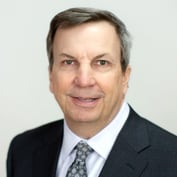Be a problem solver, not a product pusher
The first step to successful presentations, whether it be at seminars to a group of prospects or a first appointment, is know who you are, what you offer and why you are more qualified to help that prospect than anyone else.
I don’t think many in this industry take the time to determine if they are a product provider or if they are an advisor or a planner. If you are a product provider, always remember it is the benefits of your product that will get your audience interested and not the features. For example, don’t explain “what” an income benefit rider is–rather, show your audience the income they will receive, guaranteed, regardless of market returns or interest rates. They have to want the benefits you can provide or they won’t become your client.
In today’s climate, if you sell annuities you should be showing your audience what your clients started with five years ago and how much they have today. Remind them they bought into the market on the “possibility” of great returns, and ask how that worked out for them. Show them that you can give them what the market did not, which is the income they need for their future.
For advisors and planners, there is also a subtle difference. You must show your audience why you are different. In a presentation, show the benefits of working with you, benefits they won’t get from their current advisor or planner. Don’t just tell them you are better; show them. I talk about alternative investments that most other planners will not discuss, mostly because they don’t know how to use them. I show workshop attendees how my current clients haven’t lost 30 percent of their savings (as many others have) because of the benefits in the investments I provide.
In the current economy, you can tell potential clients that your mutual fund is better than theirs or that you do proper asset allocation and diversification, but it means nothing to them … mostly because their current advisor already said the same thing and they still lost 30 to 50 percent of their retirement investments. Today, you have to show them how they are going to get that money back, keep their current income level and regain confidence. These are the benefits you provide as an advisor or planner, so accentuate them.
Your first message, regardless of where you deliver it, must be quick and hard-hitting. Remind them of their problem through a simple question: “Worried about your retirement investments? You should be!” Then tell them why they need to meet you: “Find out why my clients are sleeping well and aren’t worried about their future.” Remember, it’s all about the benefits you provide, not just the features of a product.
Bring a sense of personality to your presentations
Everybody is a generalist; you need to be the specialist. An effective seminar addresses what is impacting your community and the people who reside in it. Seminars and presentation topics are not one-size-fits-all. They need to be specifically geared to the attendee’s unique situation, and offer them the information and motivation needed to make a change in their financial life. It’s about connecting with the people you work with and work for, and offering them results.
It starts with your marketing piece, developed around a message that hits home and directed to the uniquely personal needs of your prospects. From there, your communication with the prospect–between the time they RSVP and the moment you step in front of them on seminar night–should revolve around building a relationship and allowing them to learn more about you and you about them.
Always keep things personal, from the interactions on the phone to what the table tents at the seminar say. Make it clear that you know about them and only want the best for them and their unique challenges. Seat new prospects with current clients or group the prospects in attendance based on their situations and lifestyles, allowing them to mingle with others most like them, people who understand the challenges they face in life. Show them you care enough to make them feel comfortable.
You are a real person and so are your prospects. Their individual needs should be as important to you as your abilities are to them, and both should be addressed in your seminar. Allowing your audience to know a little bit more about you, your family and your commitment to community, as well as your capabilities in regards to their situation, will help you build a connection.








 December 31, 2008 at 07:00 PM
December 31, 2008 at 07:00 PM










